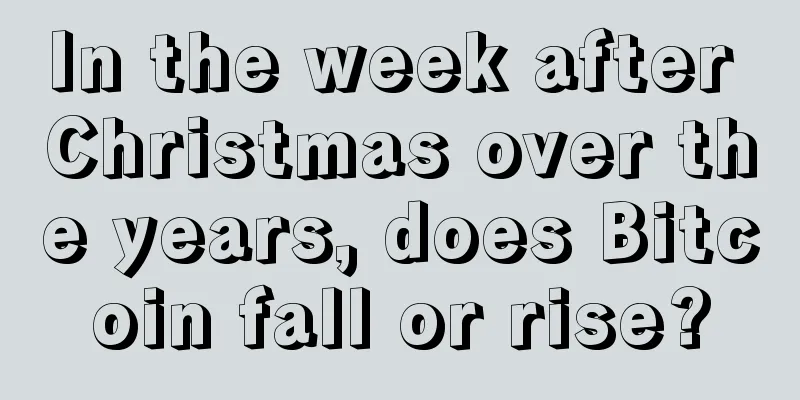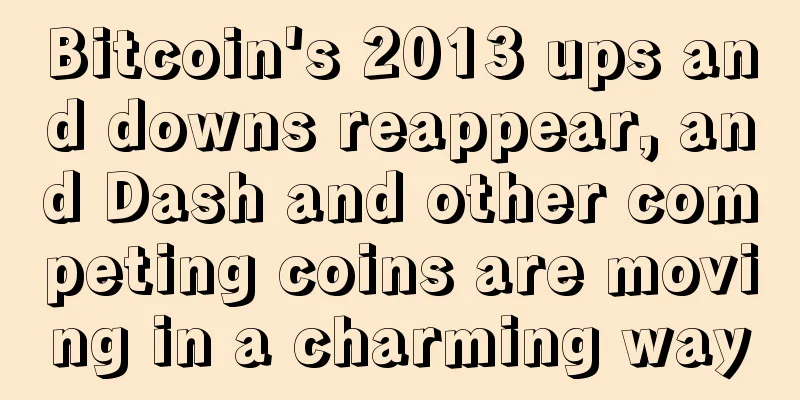In the week after Christmas over the years, does Bitcoin fall or rise?

|
In December 2017, the price of Bitcoin hit a 10-year high, and then began a wide range of fluctuations that lasted nearly three years. In early 2020, when the public was looking forward to the third halving of Bitcoin, the "312 crash" occurred. Today, as Bitcoin breaks through the $20,000 mark, the market is no longer as hot as it was in 2017. Most domestic investors have lost their chips, while foreign institutional investors are using their real money to buy Bitcoin. Previously, most investors in the industry had a view that for most Bitcoin holders, when they need to spend fiat currency, they will choose to sell Bitcoin for cash. When a large number of holders need cash at the same time, they may choose to sell Bitcoin, causing the price of Bitcoin to fall. This is the logic behind the decline of Bitcoin during Christmas and Spring Festival. But will there really be a slump on Christmas? This article will tell you some objective facts from several aspects. In the past six years, the probability of Bitcoin falling on Christmas Day is 83.3%.BlockBeats produced Bitcoin market trends for Christmas from 2014 to 2019, and found that Bitcoin fell on Christmas in all six years except 2015, with declines of -0.99%, -0.22%, -1.74%, -6.34%, and -0.77% respectively. In 2015, Bitcoin rose by 0.11%. However, if we look at the trend in the seven days after Christmas, the probability of Bitcoin rising and falling is 50%, with the highest increase being 13.69% in 2016 and the highest decrease being 4.82% in 2015. At the same time, there is no strong correlation between Bitcoin’s Christmas market and the overall trend in December. Note: All statistics are from the trading platform Bitstamp. Institutional holidays and Ripple being sued may be potential negativesInstitutions such as Grayscale and MicroStrategy began to openly increase their holdings, attracting a large number of investors to follow and imitate. Previously, ARKW, a fund under Ark Investment, sold 141,000 GBTC on November 25 and 575,000 GBTC on November 30, totaling 716,000 GBTC. Coincidentally, the day after ARKW sold GBTC, the price of BTC fell. On November 26, the price of BTC fell by 8.39%, and on December 1, the price of Bitcoin fell by 4.73%. Of course, it is difficult to blame the Bitcoin crash on ARKW’s sale of GBTC, but the influence of institutions on Bitcoin deserves our attention. Some investors often worry that compliance agencies are not working on weekends and holidays, and compliance platforms suspend trading (traditional platforms have closing times), which will cause Bitcoin prices to fall. BlockBeats checked the weekends of the past six weeks and found that there is no fixed pattern for weekends. For compliance institutions, the biggest fear is legal risk. Recently, the U.S. Securities and Exchange Commission has filed a lawsuit against Ripple, its CEO and co-founder. Whether compliant trading platforms will choose to delist XRP has become a sword of Damocles hanging over the heads of XRP holders. Of course, once supervision is strengthened, some compliance institutions may choose to sell the cryptocurrencies they hold, which will increase the selling pressure in the market or form a potential negative impact on Bitcoin. On December 24, Adam Cochran, partner of Cinneamhain Venutres, said that Coinbase may delist XRP on December 25, which happens to coincide with Christmas, so we need to be wary of market risks. Huge options are about to be deliveredThis Christmas falls on Friday, which is the delivery date for quarterly contracts and options. According to skew data, Bitcoin options worth $2.347 billion (about 102,200 coins) will expire on December 25, and the "biggest pain point" of the Bitcoin options that expire and are delivered is $18,000. In the traditional market, the sellers of options are generally institutions, and the buyers of options are generally retail investors. The biggest pain point of options is the exercise price where institutional profits are the highest and retail investors have the lowest profits. Therefore, traditional market assets tend to move toward the maximum pain point price before the option expires. Currently, the maximum pain point of Bitcoin options for Christmas delivery is $18,000. In addition to options, there are also a large number of quarterly contracts to be delivered. According to statistics from BlockBeats, more than $1.2 billion in contracts will be delivered on December 25. When the contract holdings are too large, investors need to be careful of sharp rises and falls. |
>>: $500 million flows out of Coinbase as institutional purchases far exceed miners’ capacity
Recommend
Hyperledger wants to promote the merger of IBM, DAH, and Blockstream's blockchain code bases
Yesterday, the Technical Steering Committee of th...
Are women with long chins trustworthy?
It is very important to judge whether a person is...
The personality and fortune of the five fingers
Thumb wrinkles: late bloomer This kind of person ...
Lessons from The DAO
Rage Review : The DAO project is currently the la...
Like Lin Chiling, she is successful in her career but destined to marry late
I often hear my parents talking about the past, “...
Ashare, the blockchain innovator
Ashare, an autonomous shared storage network base...
Is it good to have hanging needle lines on a diamond-shaped face? It's selfish.
Some facial features may not be considered very b...
Does a man with exposed teeth mean he will never achieve anything? Is this person's fortune good?
No matter which man he is, he doesn't want to ...
If a newborn baby has thick curly hair, does it mean he is poor or has been injured?
When a child is just born, what everyone is most ...
What is the fortune of a person with the Fire of the Hearth?
A person's fate is determined by heaven. From...
Facial features of women who don't want a house or a car
Generally speaking, many people care a lot about ...
Is the same character face shape good or bad? Detailed explanation of the same character face shape
Physiognomy is a folk knowledge that predicts for...
What does the fork at the end of the love line mean?
What does the fork at the end of the love line me...
Do men with short little fingers have a miserable life? What does a short little finger mean?
We all have different looks and physical features...
Russia’s NSD supports iCoinSoft trading platform in developing blockchain solutions
Russia’s National Settlement Depository (NSD) has...









